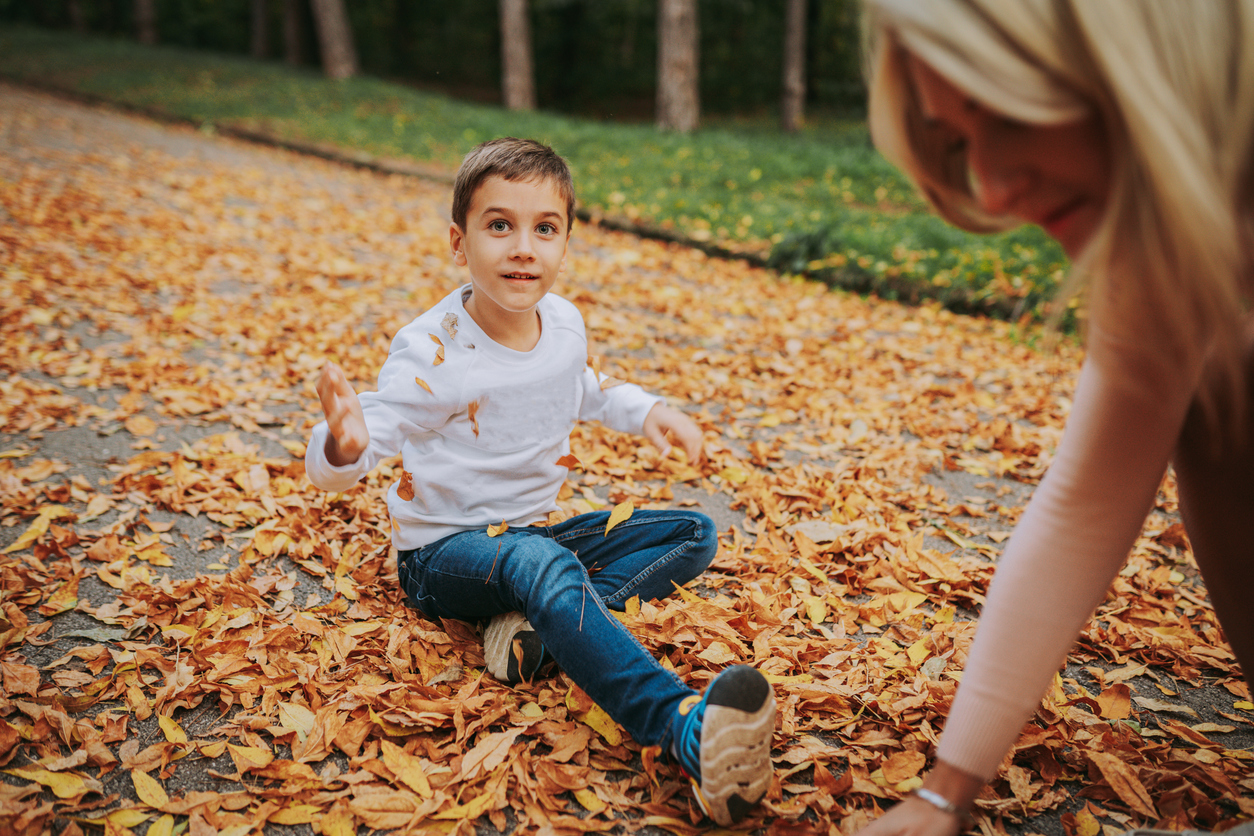10 Fall Activities for Kids with Autism

Fall is a season filled with sensory-rich experiences that can be both exciting and overwhelming for children with autism. With its crisp air, vibrant colors, and festive traditions, fall provides the perfect opportunity for families to engage their children in fun and developmentally supportive activities. Finding the right balance between enjoyment and sensory sensitivity is key to making the most of the season.
The Importance of Sensory-Friendly Activities
Children with autism often process sensory information differently, making them sensitive to sounds, textures, and visual stimuli. Fall activities can present challenges due to the season’s sensory overload—bright colors, crowded spaces, and unfamiliar textures like hay or leaves. Engaging children in sensory-friendly activities not only helps them feel comfortable but also supports their cognitive, emotional, and social development.
Fall Activities for Kids with Autism
Engaging in fall activities with your child with autism can create lasting memories and promote developmental growth in a fun, sensory-friendly environment. Whether it’s nature walks, sensory bins, or adaptive Halloween experiences, the key is to focus on your child’s unique needs and preferences.
Nature Walks and Leaf Collecting
One of the simplest yet most engaging fall activities for kids with autism is going on nature walks. The sensory experience of walking through fallen leaves and seeing the vibrant colors can be calming and enjoyable. For children who enjoy tactile activities, collecting leaves of different shapes, sizes, and colors can be particularly stimulating.
Bring along a sensory-friendly backpack with items like noise-canceling headphones for children sensitive to sounds, or soft gloves for those who may not enjoy the texture of leaves. Create a simple checklist of different types of leaves or trees for a scavenger hunt to make the walk more structured.
Pumpkin Picking and Decorating
Pumpkin patches are a quintessential fall activity that can be adapted to fit the needs of children with autism. Many pumpkin patches offer open, uncrowded spaces where children can freely explore without feeling overwhelmed. Once home, decorating pumpkins can be a fun, creative task that encourages self-expression.
Skip the traditional carving if your child is sensitive to textures or finds it challenging. Instead, provide stickers, paint, or other non-messy decorations that allow your child to decorate their pumpkin in a way that feels comfortable. You can also provide pre-cut shapes or stencils for added structure.
Apple Picking and Sensory Cooking
Apple picking is a multi-sensory experience that can engage children in both physical activity and sensory exploration. From the sensation of picking apples off a tree to the smell of fresh fruit, this activity can stimulate a child’s senses. Additionally, using the apples to cook or bake afterward introduces them to new textures, smells, and tastes.
Before heading to the orchard, prepare your child by explaining the process and bringing sensory tools if needed. Once home, involve your child in simple tasks like washing or cutting apples. You can create a calm, structured environment in the kitchen with clear instructions and visual aids.
Sensory-Friendly Fall Festivals
While some fall festivals may be overwhelming for children with autism, many communities now offer sensory-friendly events. These festivals often have quieter areas, reduced lighting, and smaller crowds, making them more inclusive for families.
Research sensory-friendly festivals in your area. Bring along familiar items like a fidget toy or weighted blanket to provide comfort. It’s also helpful to preview the event with your child by showing pictures or videos to reduce any anxiety about new experiences.
Creating a Fall Sensory Bin
A fall-themed sensory bin is a great indoor activity that encourages tactile exploration. Fill a large bin with fall-related items like dried corn kernels, pinecones, acorns, small pumpkins, and artificial leaves. Sensory bins can help children practice fine motor skills while providing a calming, focused activity.
If your child is sensitive to certain textures, offer different materials like fabric leaves or plastic acorns. Add visual elements such as fall-themed figurines or animals to enhance the experience. You can also turn this into a learning activity by asking your child to count or sort the objects by size or color.
Fall-Themed Arts and Crafts
Crafting is another creative way to engage children with autism during the fall season. Leaf rubbings, creating paper pumpkins, or making nature-inspired art with leaves and twigs are simple, sensory-friendly activities.
Provide a clear structure by showing your child examples of the craft or offering step-by-step guidance. Use materials that your child enjoys touching, and offer tools like scissors or glue sticks if they are sensitive to sticky substances. Crafts that focus on repetitive movements, like stamping or painting, can be particularly calming.
Visiting an Animal Farm or Petting Zoo
Fall is a great time to visit a local animal farm or petting zoo. Many children with autism enjoy interacting with animals, as they offer a calming, non-verbal form of communication. These settings provide a hands-on experience where children can pet animals, feed them, and learn about farm life.
Look for quieter times to visit the farm to avoid large crowds. Some farms may also offer sensory-friendly days. Prepare your child for the visit by explaining what animals they might see and how they can interact with them.
Building a Fall Fort or Outdoor Obstacle Course
If your child enjoys physical activities, building a fall fort out of leaves or constructing a simple outdoor obstacle course can provide hours of entertainment. Leaf piles, sticks, and other natural materials can be used to create a play area that encourages both physical and imaginative play.
For children who prefer structure, outline clear steps for building the fort or completing the obstacle course. Offer visual instructions or break down the tasks into manageable parts. This can be a great way for children to develop gross motor skills while enjoying the outdoors.
Storytime with Fall-Themed Books
Many children with autism enjoy stories, especially when paired with visuals. Fall-themed books can help children understand the season, explore new concepts, and engage their imaginations. Consider reading books that feature autumn animals, harvests, or seasonal changes.
Choose books with plenty of pictures and limited text if your child is visually oriented. You can also incorporate props or objects that represent elements of the story, such as a small pumpkin or a leaf, to create a multi-sensory reading experience.
Sensory-Friendly Halloween
Halloween can be overwhelming for many children, but with some adaptations, it can also be an enjoyable fall activity. Hosting a sensory-friendly Halloween party or trick-or-treating at homes that offer non-scary, low-sensory environments can allow children to participate without feeling stressed.
Opt for costumes made from soft, breathable materials that won’t irritate your child’s skin. If traditional trick-or-treating is too intense, consider doing it during the daytime or limiting the number of houses you visit. You can also practice ahead of time by having your child dress up and “trick-or-treat” at home.
How ABA Therapy Can Help With Fall Activities for Autism
Applied Behavior Analysis (ABA) therapy can play a key role in helping children with autism fully enjoy these fall activities while working toward developmental milestones. ABA therapy services emphasize individualized learning and reinforcement, which can be seamlessly incorporated into everyday tasks and fun seasonal experiences. For example, during a nature walk or pumpkin-picking activity, ABA strategies can help break down the steps of the activity into manageable tasks, offering positive reinforcement at each stage. This helps children stay engaged, practice new skills, and develop independence.
ABA also supports sensory integration by helping children gradually become comfortable with different textures, sounds, and sights, like those they encounter in fall environments. An ABA therapist can work with parents to set specific goals, such as improving social interactions or enhancing communication, which can be integrated into sensory-friendly fall activities like cooking, crafting, or visiting an animal farm.
Get Started with ABA Therapy at Empower Behavioral Health
At Empower Behavioral Health, we understand the importance of integrating ABA techniques into everyday activities to help children with autism thrive. By incorporating fun, seasonal activities like those mentioned above into your child’s ABA therapy, we can help them develop essential life skills while enjoying new experiences. If you’re ready to get started with ABA therapy or want to learn more about how we can support your child’s development, contact Empower Behavioral Health today!

